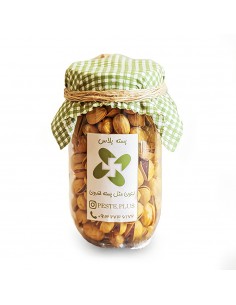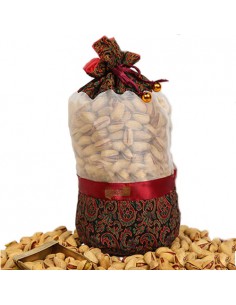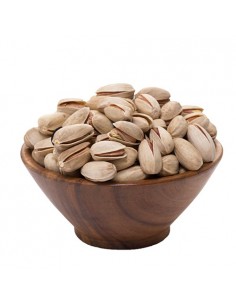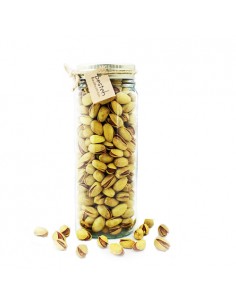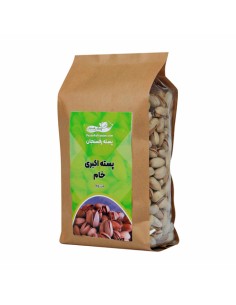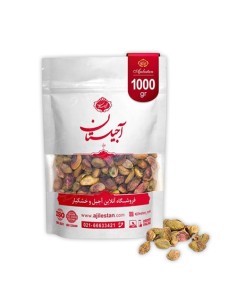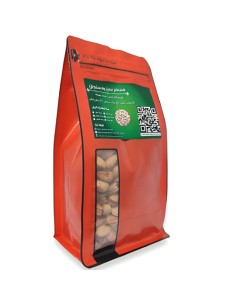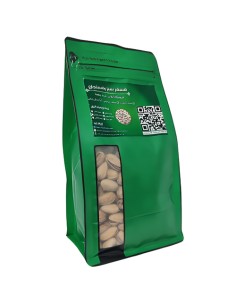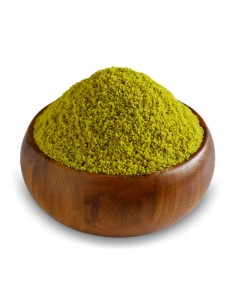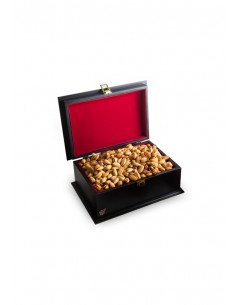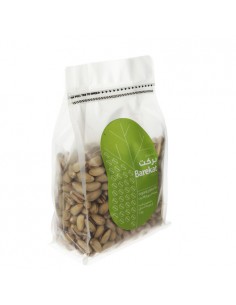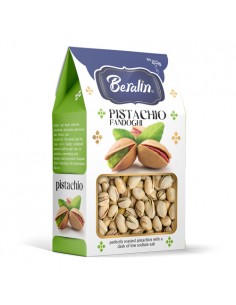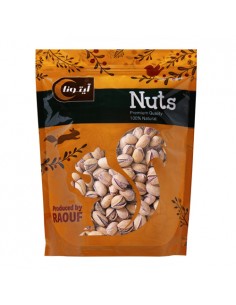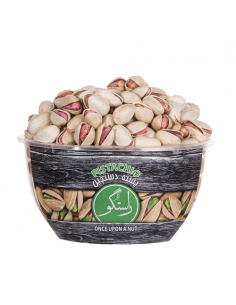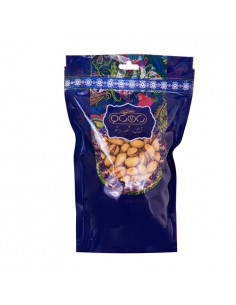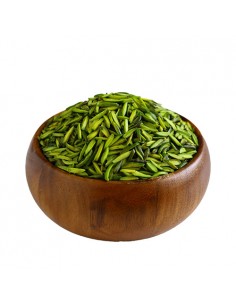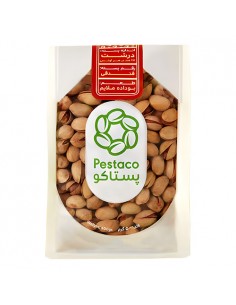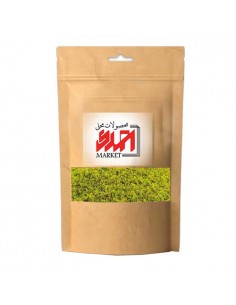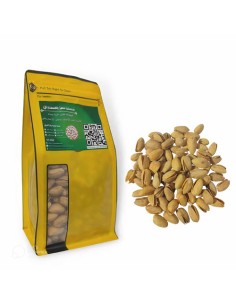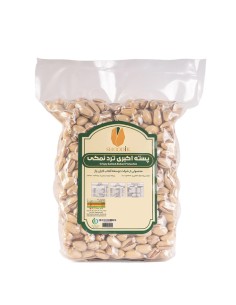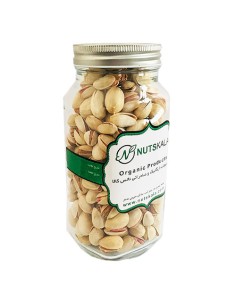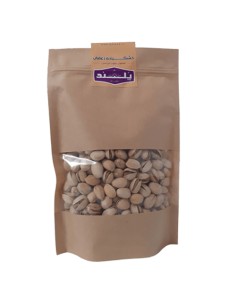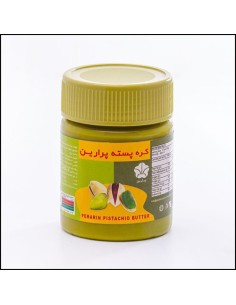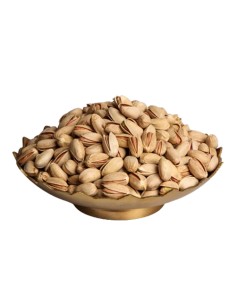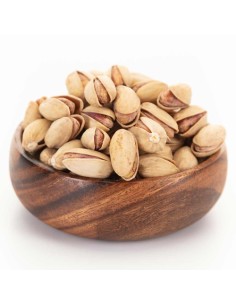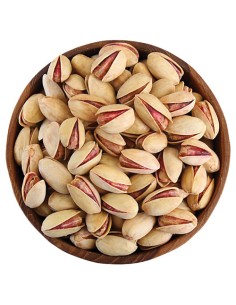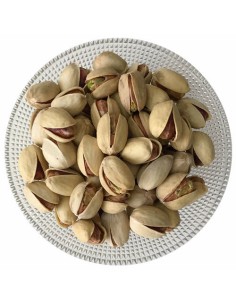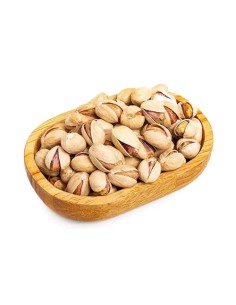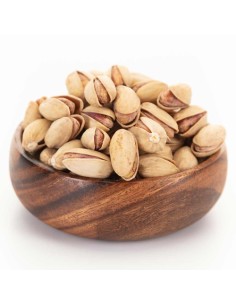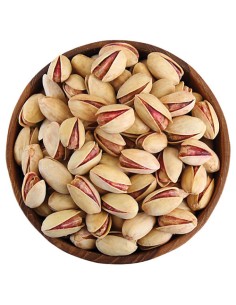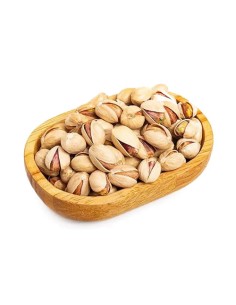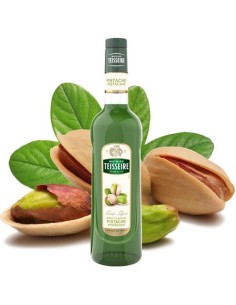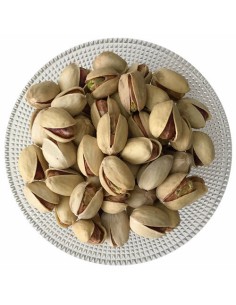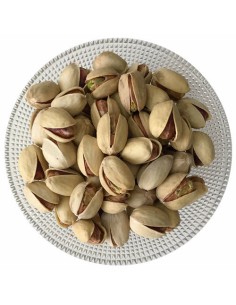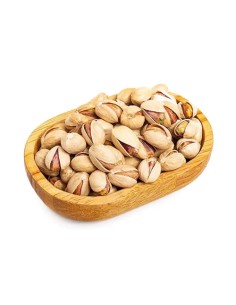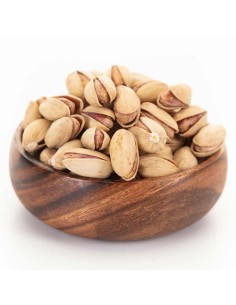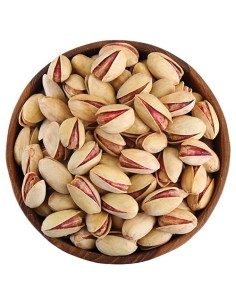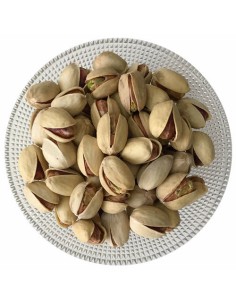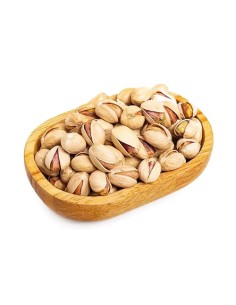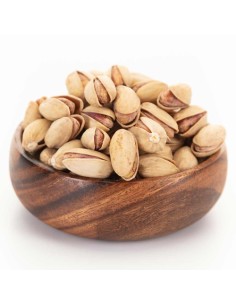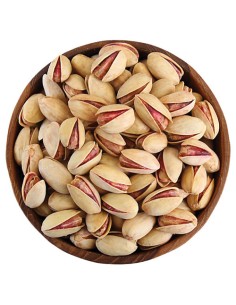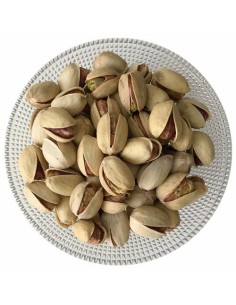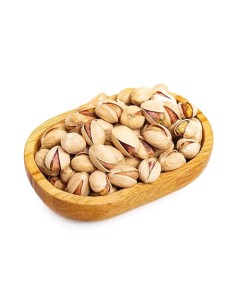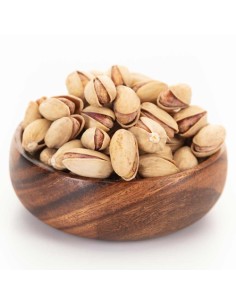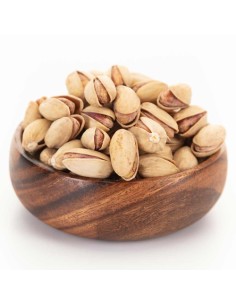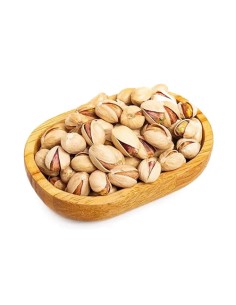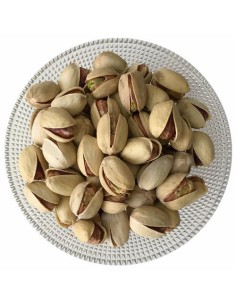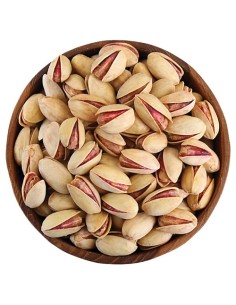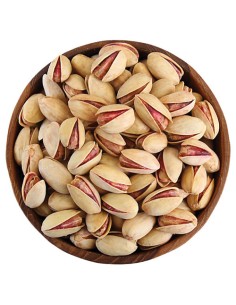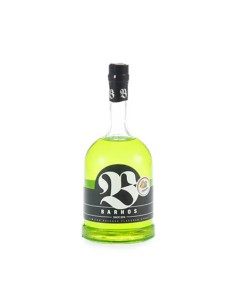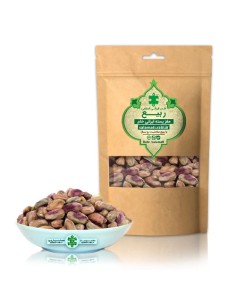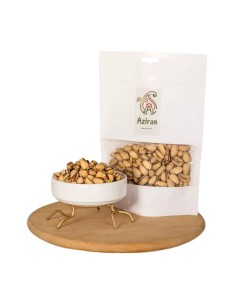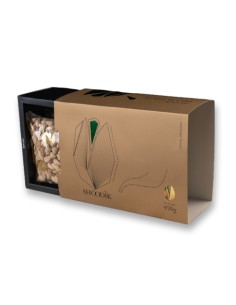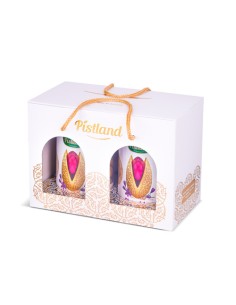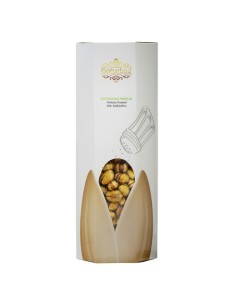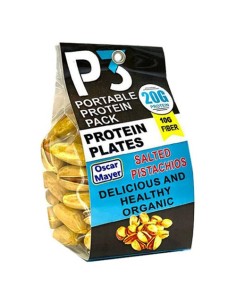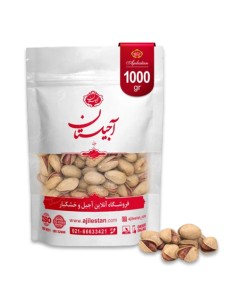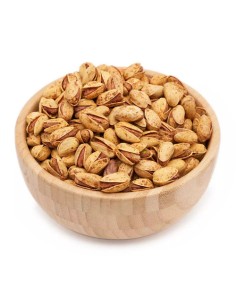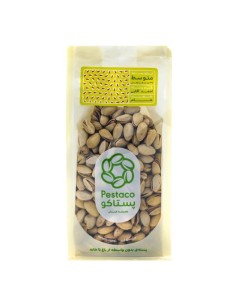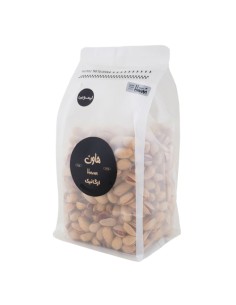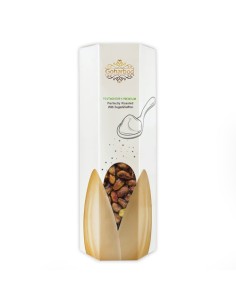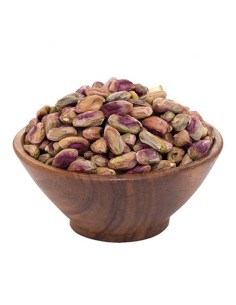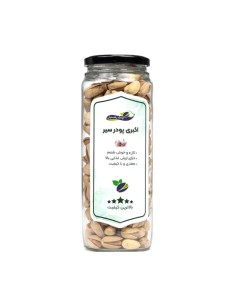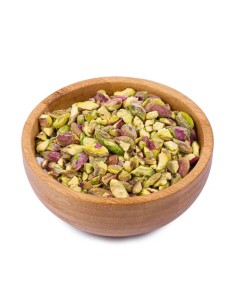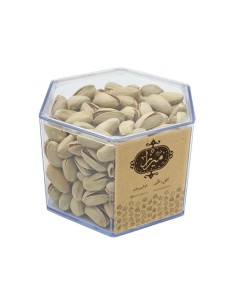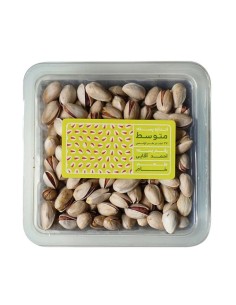Pistachio
Pistachios have captivated the global culinary scene with their unique allure of taste, vivid emerald hue, and remarkable versatility in many sweet and savory concoctions. But behind these delightful kernels lies an intriguing story of their progression from the tree to your dining table.
Pistachio Review, Select, and Shopping Guide
This article unravels the captivating process of pistachio cultivation, harvesting, processing, packaging, and distribution. Furthermore, we navigate the healthful benefits of pistachios, their gastronomic applications, fascinating trivia, and the ecological footprint of pistachio farming.
Pistachio is produced in several provinces in Iran. To make trail mix, dried pistachios are usually mixed with almonds, dried fruits, walnuts, etc. It is a traditional snack on occasions such as Nowruz, Yalda night, Chaharshanbe Suri night, and other snacks!
According to their appearance and production area, Iranian pistachios are generally classified into four types: Fandoghi, Kaleghoochi, Akbari, and Ahmad Aghaei, but all have high properties and nutritional value.
Price of Pistachio
Pistachios are usually the most expensive nut, so why is that so?
One of the reasons for the high cost of pistachios is that they are rare and high-quality ones only grown in some regions of the world.
The second reason for the high pistachios price is the long time needed to grow them enough.
The pistachio tree usually produces a crop in the middle of the year. This tree has a high product yield in one year, and next year's crop will be less than the previous year's.
At CyrusCrafts, we pride ourselves on offering the highest-quality Iranian pistachios at fair prices with fast delivery to Canada and the United States. Pistachio quality varies depending on factors such as packaging and brand name. Pistachio's price generally depends upon these two things plus seasonality (it's more expensive to buy during harvest time), and its prices can range from $25 to over $110.
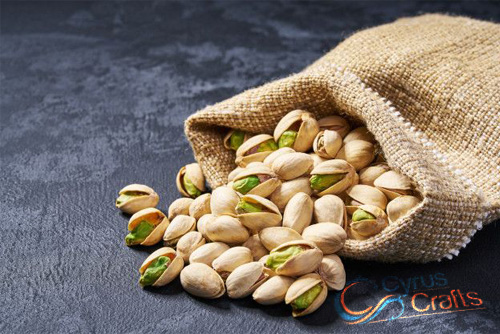
Cyrus Crafts; Luxury & Unique Products
Pistachio Cultivation & Farming
Pistachio trees flourish in warm, dry climates, making places like California, Iran, and Turkey their lush, thriving habitats. The cultivation journey commences with the planting of pistachio saplings in well-drained soil. These trees are resilient and capable of withstanding harsh conditions, yet they necessitate a lengthy growing season and a winter chill to yield an abundant harvest.
Once the trees have settled, they demand regular hydration and nourishment. Prudent pruning is crucial to sculpt the tree and stimulate optimal growth. As these pistachio trees come of age, they sprout clusters of flowers in the spring, which gradually metamorphose into the delectable nuts we relish. It takes approximately seven to ten years for a pistachio tree to reach its prime production potential, but these hardy trees can continue to yield fruit for several flourishing decades.
The cultivation of pistachios is a task that is fraught with many challenges. These trees are vulnerable to various pests and diseases, necessitating vigilant surveillance and effective pest control strategies. Moreover, the looming threats of climate change and water shortages make sustainable farming practices essential for the longevity of the pistachio industry.
The Harvesting Process of Pistachios
The extraction of pistachios from their trees is a detailed and time-sensitive endeavor. Pistachio trees bear fruits that mature in the waning days of summer, and the harvest timing is paramount to ensure the nuts' taste and texture are at their peak. Harvesting customarily commences in early September and may extend into October, depending on the climate and geographical location.
Farmers employ mechanical tree shakers that subtly jostle the tree trunks to pluck the pistachios, prompting the mature nuts to descend onto catch frames or nets strategically positioned beneath the trees. Once the nuts have been dislodged, they can sunbathe on the ground for several days to diminish their moisture content. This drying phase is vital to ward off mold infestation during storage.
Once the pistachios have sufficiently dried, they are gathered and ferried to processing facilities for further treatment. The harvesting process demands precision, as overripe or underripe nuts can detrimentally affect the quality of the resulting product.
Pistachio Shell Removal & Packing
Once the bountiful harvest of pistachios has been gathered, they embark on a meticulous transformation journey, preparing them for their final destination: the consumer's palate. The first phase of this journey involves the gentle removal of the outer hull, the pistachio's natural armor. This is traditionally achieved by passing the nuts through a specialized machine, which delicately rubs off the hull, unveiling the hard, protective shell beneath.
Subsequently, the pistachios are sorted by size, color, and quality. This rigorous selection process ensures that only the finest nuts grace the market. Some of these pistachios retain their natural charm, with shells intact. In contrast, others undergo an additional processing stage to shed their shells, morphing into the familiar split-open pistachios we so fondly recognize.
Packaging is the unsung hero in the saga of pistachio preservation, playing a pivotal role in maintaining their quality and freshness. Once processing is complete, the pistachios are carefully encased in various containers, ranging from modest bags to grandiose bulk packaging. Specialized packaging materials serve as a fortress, safeguarding the pistachios from the destructive forces of moisture, light, and oxygen. This ensures that the pistachios' delightful flavor and unique texture are impeccably preserved during their journey through transportation and storage.
Nutritional Value of Pistachios
These seeds contain protein, carbohydrates, fats, amino acids, dietary fiber, iron, potassium, calcium, sodium, zinc, copper, and essential vitamins such as vitamins A, B6, C, K, thiamine, folate, and betaine.
Approximately 100 grams of pistachios contain the following minerals and vitamins:
| INFORMATION | AMOUNT |
|---|---|
| Calcium | 130mg |
| Iron | 7.5mg |
| Phosphorus | 500mg |
| Fat | 54mg |
| Potassium | 950mg |
| Protein | 20mg |
| Vitamin B1 | 0.7mg |
| Vitamin B6 | 1.7mg |
| Vitamin B2 | 1.5mg |
| Vitamin A | 230 IU |
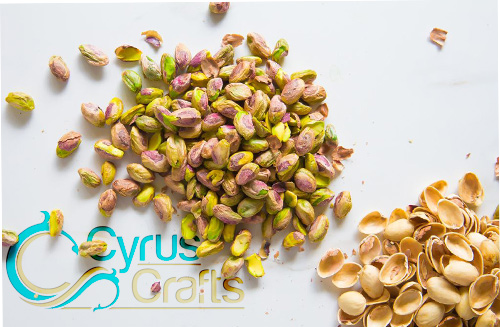
Health Benefits of Pistachios
Pistachio, a famous Iranian snack, has many health benefits, including the prevention and treatment of diseases. It has the following medicinal properties:
- Consuming pistachios daily can help individuals suffering from anemia by increasing their iron intake.
- Raw pistachio boosts sexual stamina.
- They are helpful for the stomach.
- It is recommended to consume pistachios for liver health.
- Pistachio strengthens the brain and mind.
- Fresh pistachio calms the heart and nerves if consumed daily.
- Pistachio also helps soothe coughs.
- It is beneficial for treating diarrhea and even dysentery.
Unique and Numerous Properties of Pistachios
Pistachio is a nutritious and tasty snack that has so many health benefits. Here are some advantages of this member of the Iranian trail mix:
- Daily consumption of these nuts lowers LDL or bad cholesterol in the body. It is high in amino acids, which help prevent blood vessel narrowing and the formation of blood clots.
- Both raw pistachios and unprocessed ones are especially beneficial to those on a diet. They aid in weight loss and help people maintain their ideal weight because they are low in calories, fat, and protein.
- Cellular metabolism releases radicals that cause heart disease and cancer, but pistachio consumption neutralizes these free radicals due to high antioxidant levels.
- Pistachio kernels are also rich in lutein and Zaxtin (carotenoid antioxidants), which help reduce the risk of macular degeneration, a disease common in the elderly ages.
- It also contains a lot of copper, which helps the body absorb more iron from food, which can help fight anemia by increasing hemoglobin and blood flow.
- Another benefit of this tasty and helpful trail mix is that it is an excellent source of dietary fiber, which helps the digestive system function better.
Note: Powder pistachios are available on this website if you have a problem chewing these nuts. It can also be used as a unique spice!
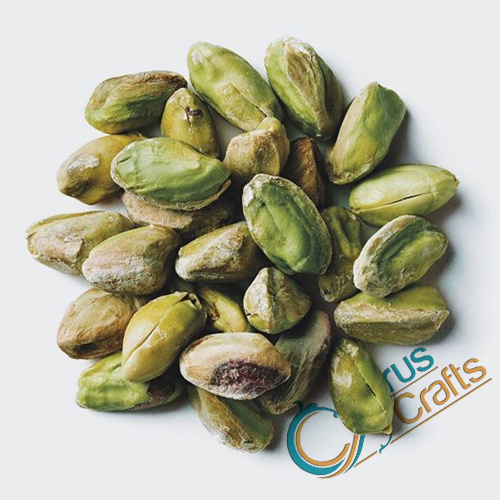
Types of Pistachios
The appearance of Persian pistachios is classified into two groups: hazelnut-shaped and almond-shaped.
Hazelnut-shaped Pistachios
Two varieties of Persian pistachios are classified into hazelnut- shape groups:
Fandoghi Pistachio
It is the most cultivated type of Iranian pistachio. Because its high production volume makes it very reasonable among pistachio prices, this variety has made up most of Iran's exports for many years and remains so today.
Kalle Ghouchi Pistachio
The Kalle Ghouchi pistachio is larger than the Fandoghi, has a round shape, and has an extremely high level of unsaturated fat. The distinctive taste makes it perfect for snacks.
almond-shaped Pistachios
Almond shape pistachio growth mostly in Khorasan, Kerman, and Yazd. Two varieties of pistachios are classified into almond- shape groups:
Ahmad Aghaei Pistachio
It is more significant than Fandoghi and smaller than the Akbari pistachio. Most farmers prefer to grow Ahmad Aghaei pistachio because of its high yield and shorter production time. One characteristic distinguishing Ahmad Aghaei pistachio is the color of its outer shell, which is brighter than other varieties.
Akbari Pistachio
The Akbari pistachio is the longest and darkest of all Persian varieties. It also grows more slowly than other types, making it a far more expensive and high price pistachio.
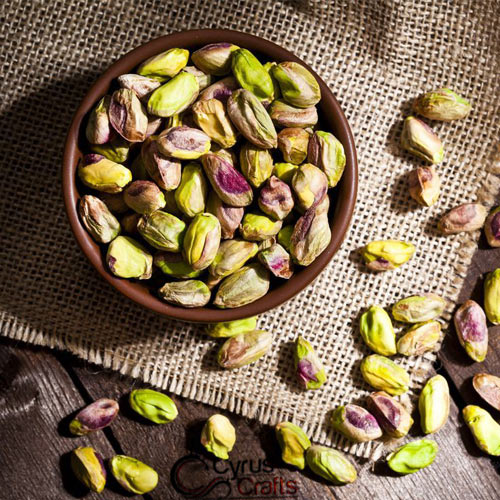
Uses of Pistachios in a Variety of Foods
Pistachio is used in desserts, confections, other foods, and trail mixes. Pistachio kernels can also be used to make pistachio butter.
The pistachios are also used in traditional Iranian desserts and foods, such as Persian rice pilafs, Sholezard, Ma'joon (a mixed drink), ice cream, pistachio pudding, and confections.
Pistachio milk is one of the thickest and most nutritious Iranian beverages, and it is frequently the best choice for athletes, dieters, growing children, and guests. Furthermore, some pistachio powder can be mixed into other beverages, such as banana or coconut milk.
Iranians also use pistachio kernels in delicious pastries such as Gaz, Sohan, and baklava, where they add flavor and beauty.
Kernels from this plant are sliced and lightly fried and can be found in Iranian foods such as Gheymeh Nesar, Shirin Polow, and Morasa Polow.
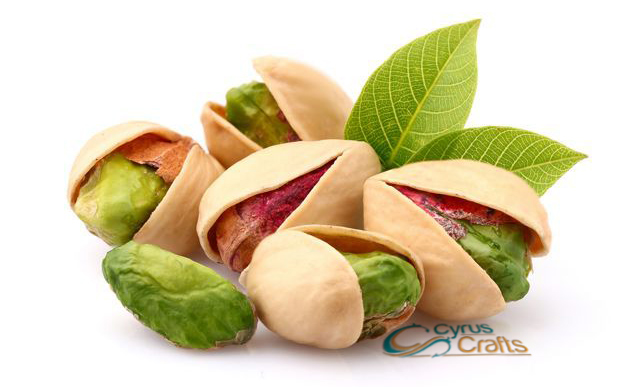
The Last Word about Buying Pistachios Online
This article has provided valuable and comprehensive information about pistachio (unshelled pistachio, powdered and sliced pistachio, dried and raw pistachio) and delicious and traditional Iranian treats. It is worth noting that pistachio and its various by-products have been produced and exported to other countries for several years. Still, we are attempting to increase their supply in global markets by leveraging CyrusCrafts' knowledge and capabilities. We are committed to offering you the best possible prices on nuts and other fine food products so that our customers enjoy their shopping experience.
CyrusCrafts will provide you with high-quality and unique products as part of its specialized activity in preparing, selling, and exporting the best Iranian pistachio so that you can have an excellent and one-of-a-kind taste and serve your guests uniquely and differently.


